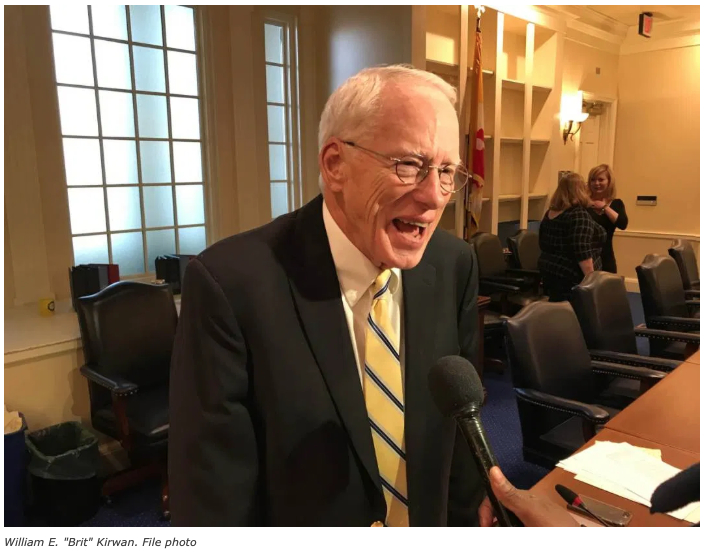 Some business leaders in Maryland are pressing for full funding of the Kirwan Commission multibillion-dollar education reform plan ― arguing that it makes good business sense.
Some business leaders in Maryland are pressing for full funding of the Kirwan Commission multibillion-dollar education reform plan ― arguing that it makes good business sense.
In a report released Tuesday, Strong Schools Maryland, which has been courting support of business leaders in the state, argues that the reforms will yield a return on investment of $3.6 billion if faithfully implemented.
And if greater educational opportunities lead to lower usage rates of government safety net programs in later life, that figure grows to $4.5 billion, according to the analysis performed by Sage Policy Group.
A key provision of the recommendations from the Commission on Innovation and Excellence in Education, as the Kirwan Commission is formally known, is that the pricey reforms to public education would be at least partially covered by increased economic activity, particularly as a result of enhanced career education and higher graduation requirements.
Under an education funding formula supported by the commission, state education funding is expected to steadily increase over the next decade until an additional $2.77 billion in state aid would go to schools in 2030. County budgets would also increase during that time period, up to a cumulative $1.23 billion annually.
Some county leaders and Gov. Lawrence J. Hogan Jr. (R) have expressed concern about the costs of the proposed reforms. Hogan has vowed to oppose tax increases to pay for the reforms.
But Democratic lawmakers in the General Assembly have declared funding the recommendations a top priority for the 2020 session and that massive revenue increases won’t be immediately needed.
The analysis released Tuesday anticipates that the annual fiscal benefits of education reform would exceed the annual costs by 2034. The total increased investment in education over time would be covered by economic benefits by 2046, according to the analysis.
“The Kirwan Commission is the single largest economic development project the state of Maryland can undertake,” said Joe Francaviglia, executive director of Strong Schools Maryland. “If we really want to drive a 21st century economy, investing in education is probably the single-most effective thing we can do.”
As the Kirwan Commission wrapped up its work on implementation of the education reform plan and a new state funding formula to achieve it, business leaders allied with Strong Schools have been meeting to drum up support.
Montgomery County businessman and former county executive candidate David Blair hosted a meeting with Commission Chairman William E. “Brit” Kirwan and influential county residents at his Potomac home last month.
Donald Manekin, real estate developer and former chief operating officer for Baltimore City Public Schools, and Jim Shea, former chairman of Venable and a 2018 Democratic gubernatorial candidate, are among Strong Schools supporters.
Strong Schools is founded by David Hornbeck, former Maryland state superintendent of schools and a leader of past education reform movements in Pennsylvania and Kentucky.
Kirwan himself has been touting the forthcoming report for weeks.
“When you think about the growth in the economy and the savings that are going to come … if we educate people a lot better, we’re not going to have to spend as much on public safety. Our prison populations are going to go down. We’re going to have a better educated workforce and the state’s economy is going to be better, so we’re going to have more revenue,” Kirwan said in an interview last month. “…I think the cost, while it needs attention, can be managed.”
Other findings from the report include:
· The Kirwan Commission’s recommendation to create free or low-cost pre-kindergarten programs for three- and four-year-olds across Maryland would serve about 80,000 children in the state by 2030 ― allowing more than 10,600 women to re-enter the workforce who would otherwise not be able to. Total earnings of newly employed mothers of pre-kindergarten students in the first year of the program would be approximately $87 million, and that figure would grow to $382 million by full implementation of the programs, according to the report.
· Today, an average cohort of 69,000 Maryland public school students would be expected to pay about $8.9 billion in state and local taxes over a lifetime. The report concludes that improved educational outcomes and attainment could lead the same group to pay an estimated $12.5 billion in taxes over time.
· By 2033, the state and counties will have cumulatively spent $25.8 billion more on public education than they will have received in offsetting revenues through expanded earnings or higher labor participation. In 2046, those costs will have been fully recovered through offsetting revenues, according to the report.
The full report is available online: www.strongschoolsmaryland.org/roi-study.
By Danielle E. Gaines



Write a Letter to the Editor on this Article
We encourage readers to offer their point of view on this article by submitting the following form. Editing is sometimes necessary and is done at the discretion of the editorial staff.